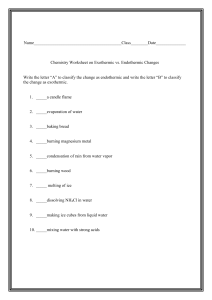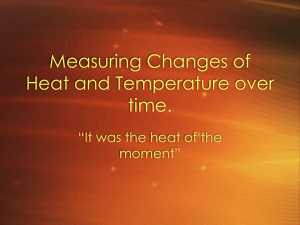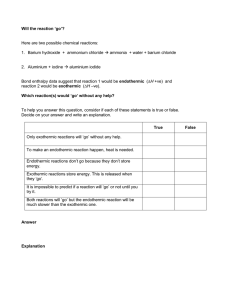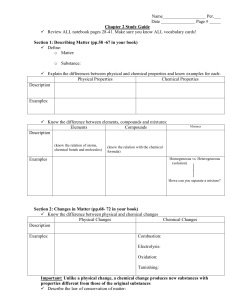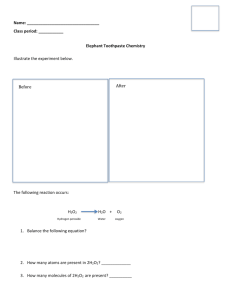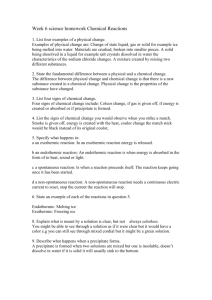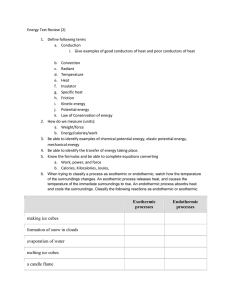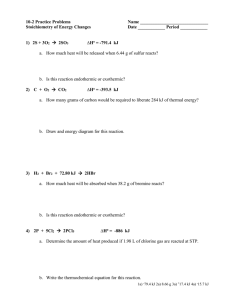Changes
advertisement
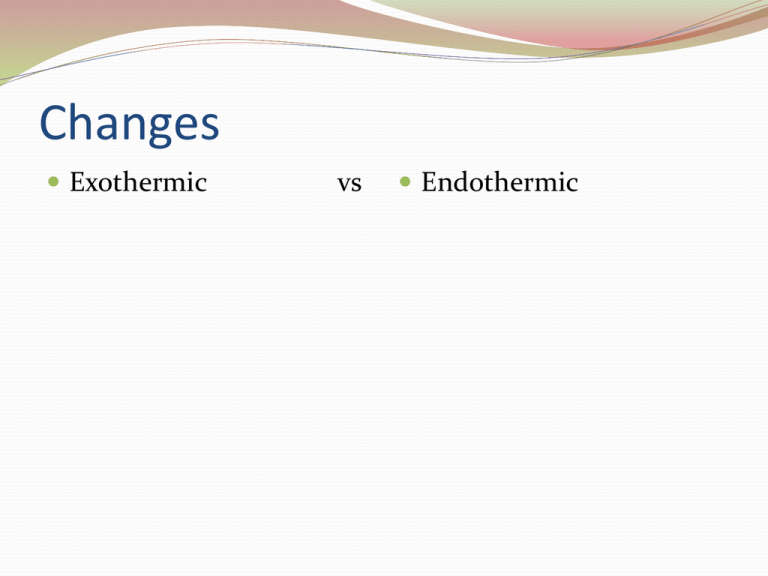
Changes Exothermic vs Endothermic Changes Exothermic Reaction that releases heat vs Endothermic-Absorbs heat Exothermic Endothermic making ice cubes melting ice cubes formation of snow in clouds conversion of frost to water vapor condensation of rain from water vapor evaporation of water a candle flame forming a cation from an atom in the gas phase mixing sodium sulfite and bleach baking bread rusting iron cooking an egg burning sugar producing sugar by photosynthesis Heat versus temperature HEAT (q) Measure of the total energy in a substance Sum of energy of all particles(kinetic energy and potential energy) Units: Joule (kgxm2/s2) kJ TEMPERATURE Related to the Average KE of particles in a sample Units: K or C 3 things that the quantity of heat transferred are dependent on: Nature of the material changing temperature Mass of the material changing temperature Size of temperature change Specific heat Amount of energy needed to raise the temp of 1 g of a substance 1 C (a calorie is the amount of heat required to raise the temperature of 1 g of H2 O 1 C) 1 cal=4.184 J Helps you to determine how many joules or calories it takes a known mass of something to change from one temperature to another Symbol: cp Unit: J/(g.K) Formula: cp= q/mT q-amt of energy lost or gained m-mass T= temperature change
